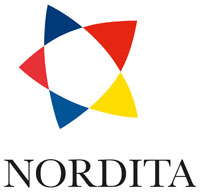By Tushna Commissariat in Stockholm, Sweden
Google the word “quantum” and take a look at what comes up.

In addition to the obvious news articles about the latest developments in the field and the Wikipedia entries on quantum mechanics, you’ll undoubtedly come across a heap of other, seemingly random, stories.
I found, for example, a David Bowie song being compared to a quantum wavefunction (by none other than British science popularizer Brian Cox), as well as a new cruise ship being named Quantum of the Seas. Then there’s the usual jumble of pseudo-scientific “wellness” therapies that misguidedly adopt the word in a strange attempt to give their treatments some sort of credibility.
So while it seems that everyone is talking about quantum something or other, how much do we really understand this notoriously difficult subject? More to the point, how much do science journalists, like me, really know about the subject? I write stories about quantum mechanics from time to time for Physics World and the subject can, I assure you, be fiendish and quite mind-bending.
To try and really get to grips with quantum mechanics and all that it entails, I am currently attending a three-day workshop for science writers at the Nordic Institute for Theoretical Physics (NORDITA) in Stockholm, Sweden – a kind of quantum-physics “boot camp” in which science communicators have been invited to widen their grasp of the subject, as well as get the most up-to-date views from experts in the field.
The workshop also hopes to get a healthy dialogue going between researchers and journalists, with the aim of sussing out the pitfalls of communicating these tricky topics.
It has been organized by NORDITA physicist Sabine Hossenfelder, who last year wrote for the 25th-anniversary edition of Physics World, and journalist George Musser, who’s a contributing editor at Scientific American.
There’s a good mix of science writers and physicists in attendance, including Chad Orzel. But is it possible to hothouse journalists and researchers for 72 hours so that the media coverage of quantum physics is transformed into a slick reporting machine?
Stay tuned as I update you on this blog.
Good luck with that, Tushna. I hope you learn that “quantum” is derived from “quantus” which means “how much”, and it all points back to the h in E=hf and the quantum nature of light. You may be told that light comes in lumps, but it isn’t like that. See this Leonard Susskind lecture. At 2 minutes 50 seconds he’s waving his marker round saying angular momentum is quantized. That’s like the rotational motion associated with the red dots in the ocean waves gif. Roll your finger around fast or slow, but roll it round the same circumference, because the waves are the same height. Look at pictures of the electromagnetic spectrum. The wave height is always the same because the dimensionality of action h is momentum x distance, and it’s always the same distance. Kind of like a guitar-string pluck.
Excellent! But, is there any way to standardize on the similes and examples used to describe one or another quantum features? So that we (readers) get the same, consistent, explanation each time. As opposed to, each journalist reinventing a brand new simile or example to explain a particular feature.
Does quantum entanglement/non-locality, as it is now understood, allow for instantaneous communication (i.e immediate contact across light years of space) ? I am just getting into this study after 40+ years of biomedical research/ practice.
Thank you,
P.L.
Morry: check with Tush, but I think they usually get given the similes, and they aren’t always very good ones.
Paul: AFAIK, no.
Trackback: Physics Viewpoint | What can you learn at a quantum ‘boot camp’?
Trackback: Blog - physicsworld.com